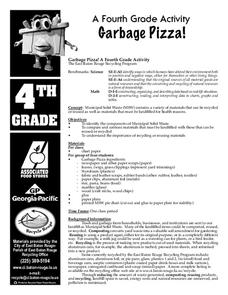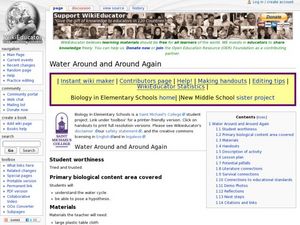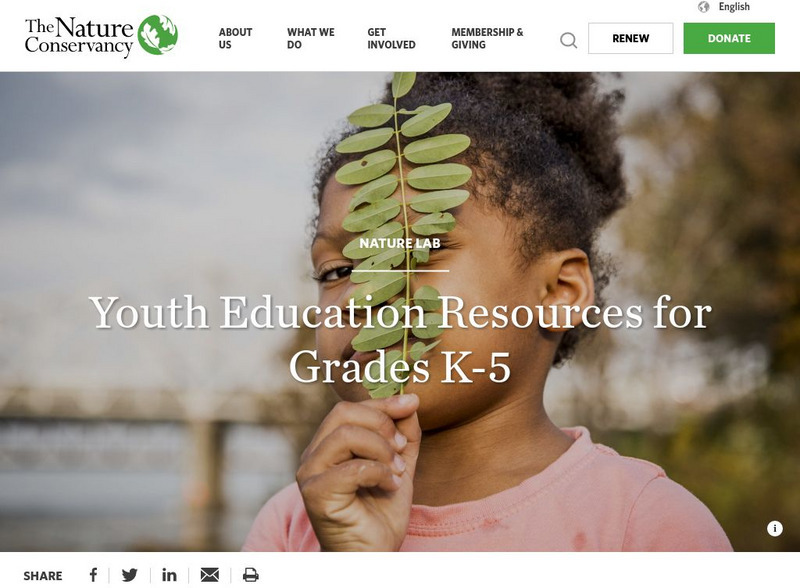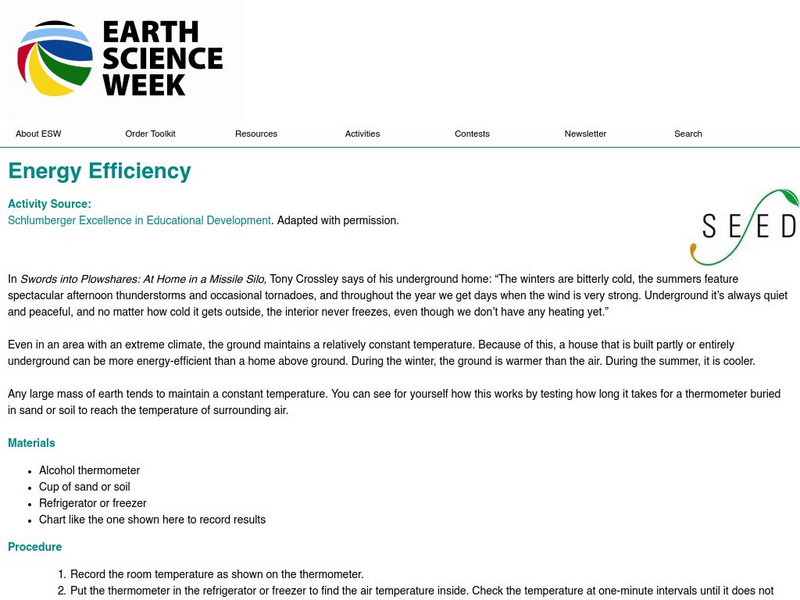Curated OER
Garbage Pizza
Fourth graders explore the concept of waste management. In this recycling lesson, 4th graders identify materials that must be landfilled as well as items that may be recycled or reused.
Curated OER
What's The Level?
Students examine the movement of the water table and saturation zones. They describe the movements of the water table and locate the saturation zones. Students identify the function of each saturation zone. They develop a model of the...
Curated OER
Water Around and Around Again
Students form a hypothesis for a water cycle experiment. In this water cycle lesson, students create their own environment with water and earth to study the water cycle. Students complete a handout to make a hypothesis and...
Curated OER
Water Pollution
Fifth graders examine what contaminated water looks like, and how it becomes polluted. They examine a teacher demonstration of water is not polluted but does contain rocks and other things that do need to be cleaned out before drinking...
Curated OER
Commonalities and Differences from Africa to Cleveland as Evidence Through the Gullah Community Connection
Students explore Afro-American history. They identify the commonality between African, Carolinian and Cleveland Black culture. Students explore the water cycle, oceanography, hydrology and bio-geochemical processes. They discuss the...
Curated OER
Environment
Fifth graders receive a general overview of the world's environmental dilemmas thereby understanding the global implications of their actions. They examine their connection to the ecosystem by looking at the influence of the environment...
Nature Conservancy
The Nature Conservancy: Gardens Activity Guide: Soil
In this lesson students conduct a soil analysis to understand soil types and explore the relationship between the garden and healthy, fertile soil. Soil is a natural resource that is crucial to life on Earth and when managed properly, it...
Other
National Association of Conservation Districts: Dig Deeper:mysteries in the Soil
A collection of facts, lesson resources, and links for teaching the science of soil. The teacher's guide includes overviews for each grade level booklet, next generation science standards, activities, vocabulary words, literature...
American Geosciences Institute
American Geosciences Institute: Earth Science Week: Mapping Your Soil
Use the Web Soil Survey developed by the USDA-Natural Resources Conservation Service to determine what soil is around your school and how it can be used.
American Geosciences Institute
American Geosciences Institute: Earth Science Week: Energy Efficiency
In this simple experiment, students learn about the insulating characteristics of soil and how this relates to energy efficiency.
Utah Education Network
Uen: Blowing and Flowing
Students make predictions about the erosion of three types of soil. The three soil types contain varying amounts of vegetation. This investigation requires the construction of an erosion table. The activity takes only 45 minutes, but the...
Other
Worm Woman's Web Site
Basic introduction to former biology teacher Mary Appelhof's books on vermicomposting at home/school/small businesses. Moderate autobiographical information on Applehof and her goals and purpose for vermicomposting. Brief description of...













